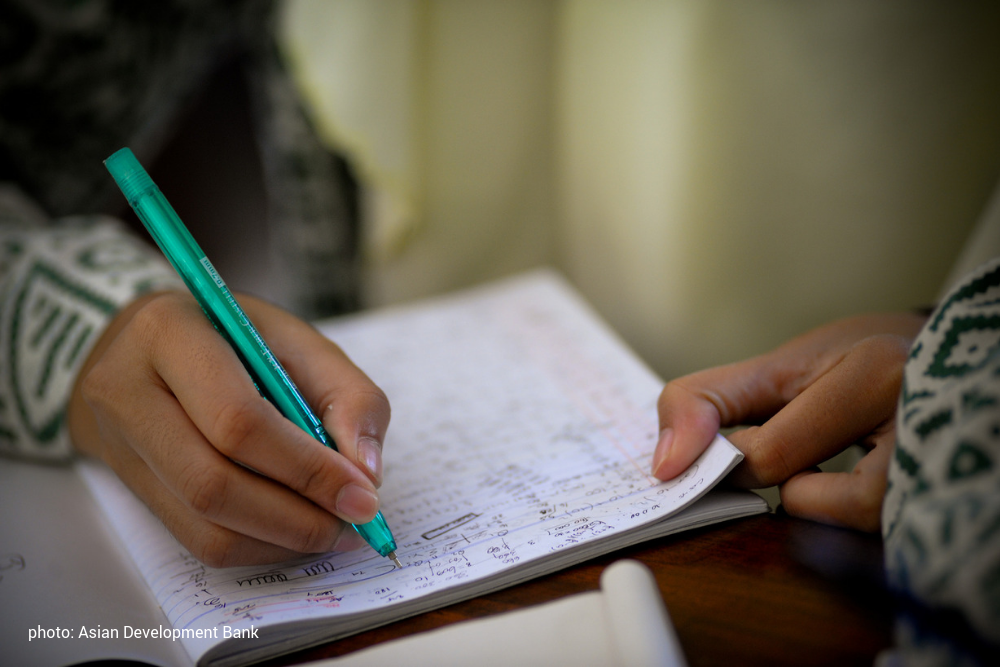By Liesbet Steer and Pedro Alba
In response to Owen Barder and Andrew Rogerson:
The Center for Global Development (CGD) recently posted a blog that presented several misconceptions about the establishment of the International Finance Facility for Education (IFFEd). The current working design of the Facility addresses many of the concerns raised by the two authors of the blog, making it one of the most efficient and effective financing solutions to support country-led education investment and innovation – ultimately improving learning outcomes. Here are five reasons why IFFEd is a smart answer to lower-middle-income countries’ need for additional and more effective education funding:
1. Countries will invest more in education if financing is more affordable and focused on results.
IFFEd is designed in response to countries’ reluctance to borrow for education by providing both more and better financing options. IFFEd addresses some of the fundamental reasons – laid out in the CGD blog – why borrowing for education is currently so low. While price is not the only factor, lowering the price of lending has been proven to help.
It is generally accepted that countries are reluctant to borrow for education for at least three reasons. First, some government decisions are subject to election cycles, so some incumbents are reluctant to borrow for education today when the benefits can take several years to become evident. Second, governments are averse to taking on expensive debt for education that could have uncertain fiscal returns. Third, finance ministers do not always believe that education investments are met with tangible learning impacts.
Price incentives could help. This is underlined in a recent paper by the IMF analyzing the relative underinvestment in schools that suggests that concessional finance is a solution to address political myopia and debt risk. It argues that:
“Addressing the short-term concerns [of greater upfront fiscal costs and delay in returns] related to investments in education may require the help of multilateral agencies. Specifically, our paper recommends offering concessional financing and grants to give policymakers the incentive to emphasize investment in schools.”
This is precisely what IFFEd is designed to do: combine grants with multilateral development bank (MDB) loans (already significantly cheaper than commercial loans for LMICs) to provide upfront fiscal resources (the grants) to incentivize investments in education.
However, IFFEd does not use price incentives alone. It addresses governments’ reluctance to invest through a combination of affordable financing packages and results-based approaches to maximize impact. Investments supported by IFFEd will need to be results-based as part of the key eligibility criteria. There are different ways this can be done. Evidence on results-based approaches has been mixed and suggests that “monetizing education outcomes” is not as simple as the CGD blog may imply. It requires careful consideration and design to avoid perverse incentives. That is why we propose to link the entire financing package of both the grants and the loans to education outcomes as part of a compact between MDBs and recipient countries — and why IFFEd is creating a platform for MDBs to collaborate and share expertise on the most effective design of such instruments.
2. MDBs’ capital increases do not generate sufficient financing for education.
IFFEd addresses a critical challenge in overall financing available for the Sustainable Development Goals (SDGs): MDBs, which are critical providers of long-term development financing, cannot extend their lending capacities through capital increases alone.
For example, the World Bank has recently completed its own capital increase and has clearly stated that it will not be enough to fully address financing for development needs. The World Bank alone estimates demand for its lending of up to $36 billion annually, which is significantly more than its current and projected lending capacity. Despite recent and future successful increases in MDBs’ capital bases, available finance will still fall far short of needs. This is one of the key reasons why IFFEd is strongly supported by all four of the major Regional Development Banks (RDBs) as well as the World Bank.
IFFEd addresses current capital constraints in major MDBs by providing them with a form of quasi-equity when they undertake additional education loans. It is entirely consistent with MDBs’ strategy to use innovative finance and tap private capital markets to turn “billions into trillions” for development.
The CGD blog suggests that rather than launching IFFEd, it would be preferable to increase the capital of MDBs further by expanding their callable capital. Alas, if it was only so easy. Additional callable capital (if indeed there was an agreement among shareholders to provide such capital) would not expand the lending capacity of MDBs, only paid-in capital would. IFFEd aims to increase the capacity of MDBs by using portfolio insurance as equivalent to paid-in capital.
3. IFFEd is a very good deal for donors.
Using portfolio insurance provided by donors, IFFEd will leverage 4 to 5 times the amount of every grant dollar invested by donors, providing an opportunity to make donor funds invested in education in LMICs — currently 75% of ODA — go much further. It could double current MDB investment in education and free up additional funds for other donor priorities. IFFEd could thus complement efforts by donors to increase grant resources for low-income countries and emergencies where grants are also urgently needed.
The CGD blog suggests that in case of default donors would be called on to pay out a high price (first loss) to bail out bad loans. This is incorrect. In reality, the current design calls on IFFEd to pay out on a pari passu, not first loss, basis. This means that in the very unlikely event that a contingent commitment is called, IFFEd would only need to pay a share of the late payments that is equal to the share of IFFEd-supported education loans in the entire portfolio of MDBs. For example, if MDBs have a net outstanding portfolio of $100 billion, and IFFEd has supported $1 billion of additional education loans, then the IFFEd share will be 1%. Hence, if there are late payments of US $100 million, IFFEd would only pay the MDBs $1 million.
But there is more. Because of MDBs’ excellent credit record, the chance for IFFEd’s contingent commitments to be called is very small. The total outstanding portfolio of the MDBs at the end of 2017 was close to US $400 billion, of which less than US $1 billion was in nonaccrual status (about 0.25% of the outstanding portfolio). The average length of nonaccruals in one large MDB is about four years according to the data currently available. In other words, MDBs are eventually paid back. Even if guarantees are called, missed payments are eventually recovered.
4. IFFEd will not put countries at risk of debt distress.
IFFEd’s design calls on MDBs to carefully consider the impact of concessional financing on countries’ debt sustainability through using Debt Sustainability Assessment frameworks developed by the IMF and already in use in many of the lowest income countries.
The authors of the blog argue that the additional lending from IFFEd could substantially increase countries’ debt burden. In reality, annual lending through IFFEd will add one-tenth of 1% to current debt of lower-middle-income countries. The authors’ concern around debt impact is also inconsistent with their own recommendation to increase MDB capital to finance education, which of course also implies an increase in MDB lending. Moreover, IFFEd’s highly concessional financing will provide a welcome alternative to borrowing at commercial terms. In fact, CGD itself has questioned whether MDBs might be lending too little, forcing countries towards more expensive commercial loans. In fact, more, not less, multilateral lending is a partial solution, in particular for sectors like education with such clear development impacts. Reductions in borrowing should not be on the backs of the human development sectors.
We wish the authors had contacted the IFFEd teams of experts working on the design, who carefully considered the debt sustainability issue with contributions from Civil Society Organizations (CSOs) who contributed to the consultation around IFFEd’s design several months ago. The design requires that only countries with a demonstrated plan for increased domestic financing and assessment of debt risk will be eligible for IFFEd financing. By providing loans that eventually need to be repaid, IFFEd’s design underlines that the primary responsibility for financing education eventually lies with governments themselves.
5. IFFEd will foster cooperation between education initiatives and increase harmonization (not fragmentation).
Unlike other instruments, IFFEd will be fully integrated into MDBs’ own operations and workstreams. Most importantly, IFFEd will be invisible to the final beneficiary countries, which will continue to work with the MDBs. IFFEd aims at transforming MDBs’ international investment in education by enhancing their capabilities. IFFEd will not increase fragmentation, it will actually reduce it.
At a recent meeting hosted by the UK government, a number of MDBs highlighted IFFEd’s potential to encourage MDBs to invest in education in new and more effective ways. IFFEd’s collaborative platform would enable MDBs to share experiences with results-based financing and system reforms – both potentially critical ingredients to improve education outcomes. IFFEd would also reduce fragmentation in the current aid architecture by bringing together at least five major development banks on one platform and providing financing integrated with MDBs’ core operations as highlighted in a recent report of the G20’s Eminent Persons Group on Global Governance.
IFFEd will also encourage multilateral development banks to collaborate on generating more evidence on the learning crisis and its impact on countries development trajectories (e.g. as demonstrated in the World Bank Human Capital Index), which should encourage countries to invest further in education and increase demand for financing.
We are confident IFFEd is the right answer because it:
- provides more investment in education from international actors.
- ensures greater effectiveness of existing and new investments.
- brings the combined expertise and strength of all the major MDBs.
- applies financial innovation to the greatest development challenge of our generation.
IFFEd is primarily about results, aiming to ensure that every child is learning. IFFEd’s success will not be measured by financial volumes but by the ultimate number of children who are in school and learning.
In global education – like in life – there is no perfect solution and certainly rarely a neat hierarchy of solutions as suggested in the CGD blog. IFFEd is an instrument to help strengthen our ability to tackle the world’s most silent but consequential crisis. If not properly addressed, this crisis will result in a generation of children who will enter adulthood with inadequate skills to lead a fulfilled and productive life.
A new and bold idea like IFFEd can easily be misunderstood. The design of IFFEd is multifaceted and strongly rooted in development, financial, and legal expertise. It is the result of intense work of a large team of experts from MDBs, donors, global law, and credit rating advisory firms, and the Education Commission along with inputs from client countries and civil society organizations.
It is the right and smart thing to do!

